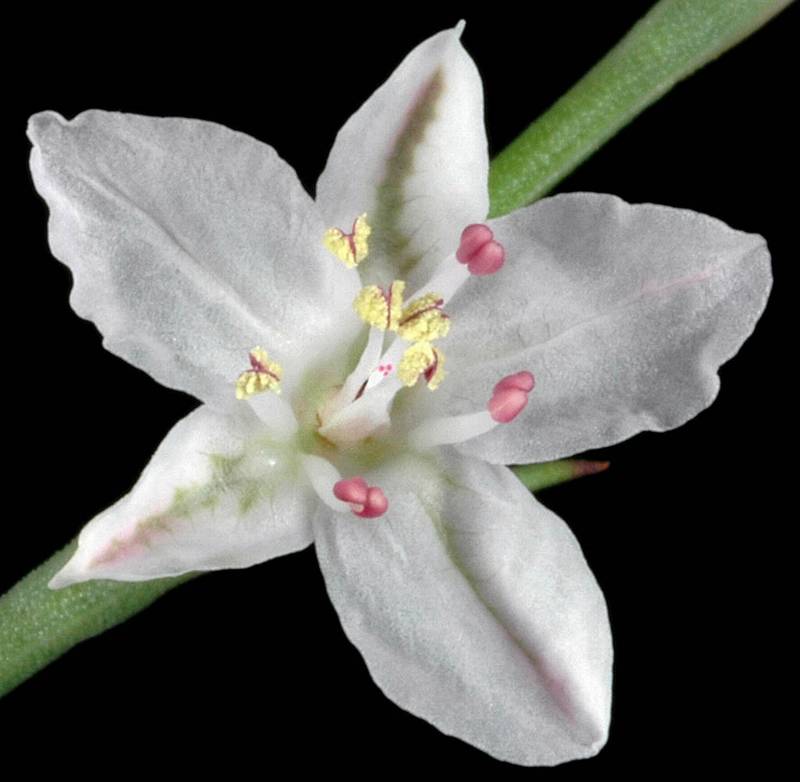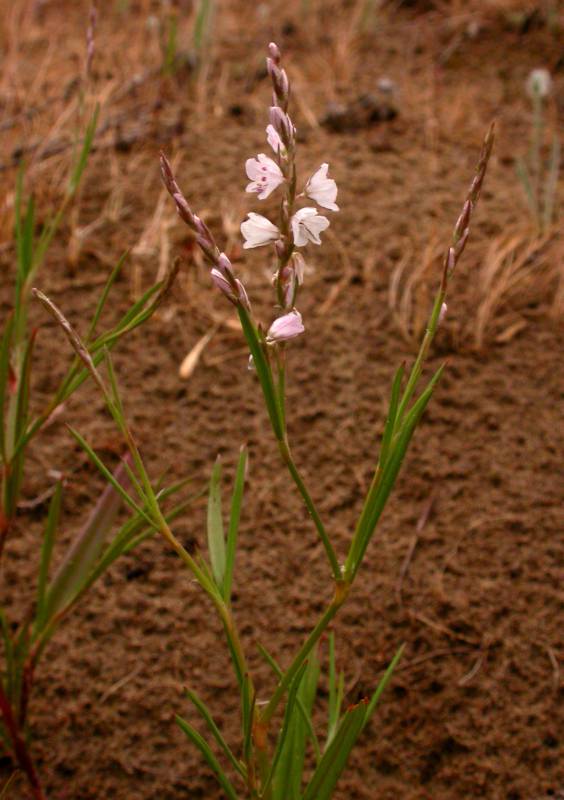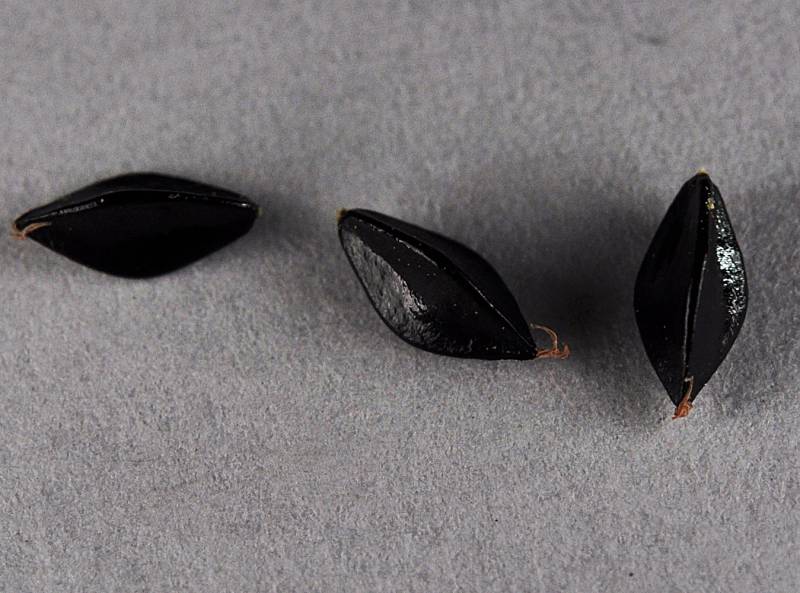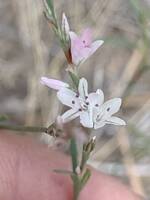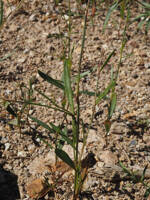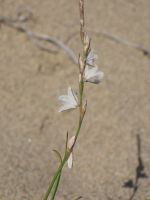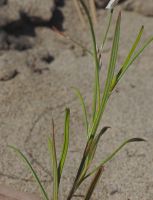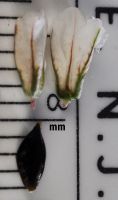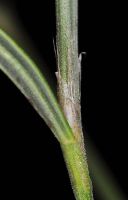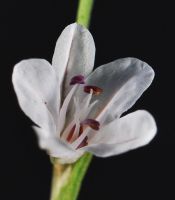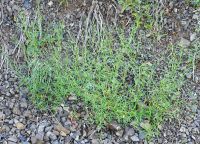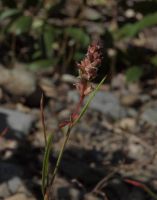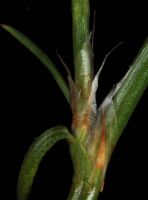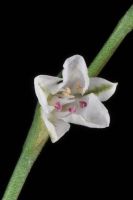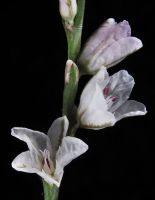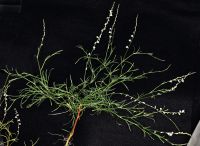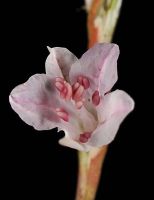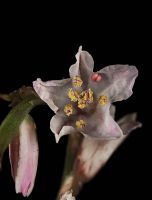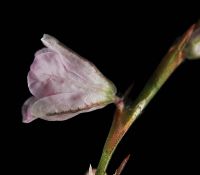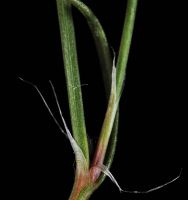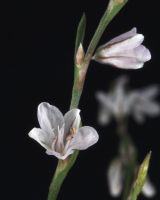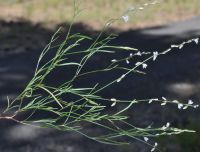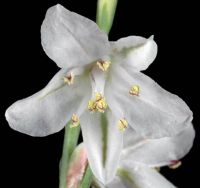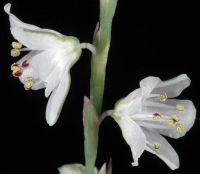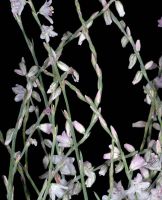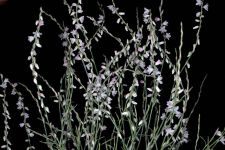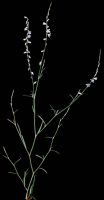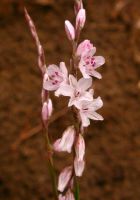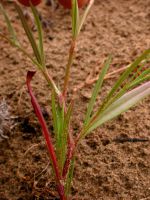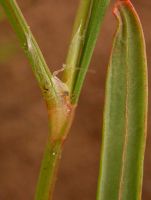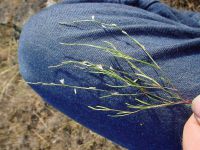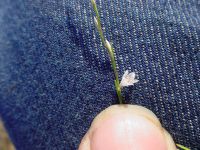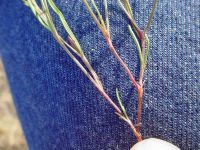Distribution: Occurring chiefly east of the Cascades crest in Washington; British Columbia to California, east to the Rocky Mountains.
Habitat: Dry, often semi-barren, gravelly to heavy soil, sagebrush desert to lower mountains.
Flowers: May-August
Origin: Native
Growth Duration: Annual
Conservation Status: Not of concern
Pollination: Bees, flies
Erect annual, the stem strongly angled, simple or freely-branched, 1-3 dm. tall.
Leaves alternate, numerous, gradually reduced upward, the lower leaves linear to oblong, sessile, 2-5 cm. long and 2-7 mm. wide, jointed at the base; stipules 10-15 mm. long, lacerate.
Flowers mostly paired in open elongate racemes, in the axils of reduced bracts or the lowest in leaf axils, the pedicles slender, reflexed; the 5 perianth segments 4-5 mm. long, attached 1/5 their length, with a greenish midvein and white to pink margins, obtuse; stamens 8, anthers purple; styles 3, short.
Achene 3-angled, 3.5-4 mm. long and ½ as wide, smooth, black and shining, tapered at each end.
Publication: Fl. Palouse Reg. 63. 1901.
Polygonum douglasii Greene ssp. majus (Meisn.) J.C. Hickman [JPM, ILBC4]
PNW Herbaria: Specimen records of Polygonum majus in the Consortium of Pacific Northwest Herbaria database
WA Flora Checklist: Polygonum majus checklist entry
OregonFlora: Polygonum majus information
E-Flora BC: Polygonum majus atlas page
CalPhotos: Polygonum majus photos

